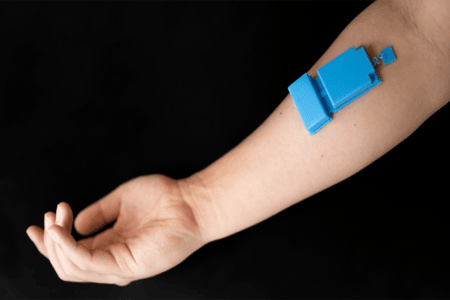
Engineers develop wearable ultrasound device
YarnsandFibers News Bureau 2024-11-19 15:51:58 – USAResearchers at the University of California, San Diego, have created a wearable ultrasound device designed to provide continuous, wireless monitoring of muscle activity. This innovation could have significant applications in healthcare and human-machine interfaces. The device enables high-resolution muscle monitoring without the need for invasive techniques.
"By monitoring diaphragm activity, the technology could potentially assist patients with breathing difficulties and those who rely on ventilators," said team member Professor Joseph Wang. The researchers also demonstrated the device's ability to monitor muscle activity in the forearm, allowing it to be used as a human-machine interface.
This ultrasound technology offers an alternative to the current standard, electromyography (EMG), which uses metal electrodes to detect electrical muscle signals. EMG has limitations, including low resolution and overlapping signals from different muscle fibers, making specific analysis challenging.
A key innovation is the single ultrasound transducer that effectively senses deep tissue by sending ultrasound waves and capturing the detailed radiofrequency signals they generate. This capability enables clinical applications like measuring diaphragm thickness.
The device achieves high spatial resolution, isolating precise muscle movements. Researchers developed an AI algorithm to interpret the signals and map them to specific muscle areas, identifying hand gestures with great accuracy.
When worn over the rib cage, the device can measure diaphragm thickness with submillimeter accuracy, helping to diagnose and track conditions linked to breathing irregularities such as asthma, pneumonia, and COPD. In small trials, it successfully differentiated between the breathing patterns of COPD patients and healthy individuals.
Worn on the forearm, the device accurately captures muscle movements in the hands and wrists. Its AI algorithm can recognize 13 degrees of freedom, covering both finger joints and wrist rotations, detecting even subtle motions with high sensitivity.
In proof-of-concept demonstrations, users controlled a robotic arm with the device by making simple wrist movements to handle tasks like pipetting. They also played a virtual game, steering a bird through obstacles using wrist motions.
Market Intelligence
Ask for free sample Report

experience
Customer Base
dedicated team
Countries Served Worldwide









